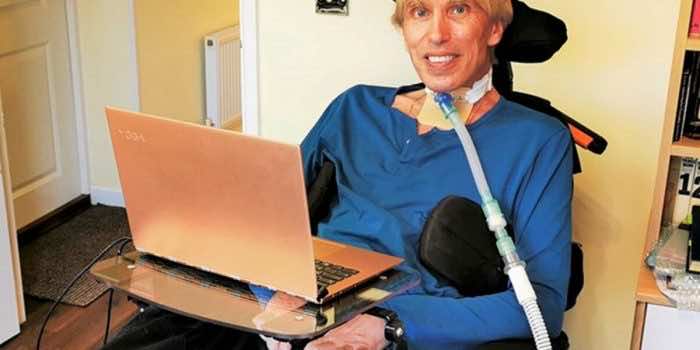After being first diagnosed with “Motor Neuron Disease” (MND) in 2017, the British scientist, Peter Scott-Morgen, was reluctant to accept his condition and went beyond the limits to become immortal. He decided to become a “cyborg” and not even a traditional cyborg but the most advanced of its kind, as he stated, “And when I say “cyborg”, I don’t just mean any old cyborg, you understand, but by far the most advanced human cybernetic organism ever created in 13.8 billion years. I’m scheduled to become the world’s very first full cyborg.”

We can’t fight with nature, and this is what happened in this case as well. This morning, his family broke the news of his tragic demise on his Twitter account. The tweet said, “To Peter’s amazing rebel supporters: With a broken heart, I’m letting you all know that Peter passed peacefully surrounded by his family and those closest to him. He was incredibly proud of all of you who supported him and his vision of changing the way people see disability.”

Days after being diagnosed with MND, he started a long and complex series of risky surgeries to become fully robotic. He had done laser eye surgery, fed tubes for food, a voice box, and a life avatar for expressing his emotions after he lost his muscles. He had also made efforts to control multiple computers through his eye movements, and he was greatly inspired by this technology. He completely lost his voice as well, and due to this, he underwent laryngectomy surgery in 2019 and said that this was the transition from Peter 1.0 to Peter 2.0.
He said, “From then on, I’ll be part hardware, part software, part digital, part analog. And it won’t stop there; I’ve got more upgrades in progress than Microsoft. Mine isn’t just a version change. It’s a metamorphosis. MND hasn’t even begun to bring me to my knees. And even long after I’m locked in, I will still be standing tall.”

Furthermore, the wheelchair on which he sits is built using state-of-the-art technology, and Peter has labeled it as “brilliantly engineered”, through which he can easily stand, lie down, and sit comfortably. Due to MND, his muscles become so weak that he can’t eat food in his mouth, and seeing this, he underwent surgery by incorporating a “feeding tube” into his stomach. His bladder constitutes a catheter, and his colon, the direct insertion of a colostomy bag.

His followers on Twitter were greatly disheartened by his sad demise, and one of them wrote, “Peter was an inspiration to able-bodied as well as disabled people. My deepest condolences to his loved ones.”


